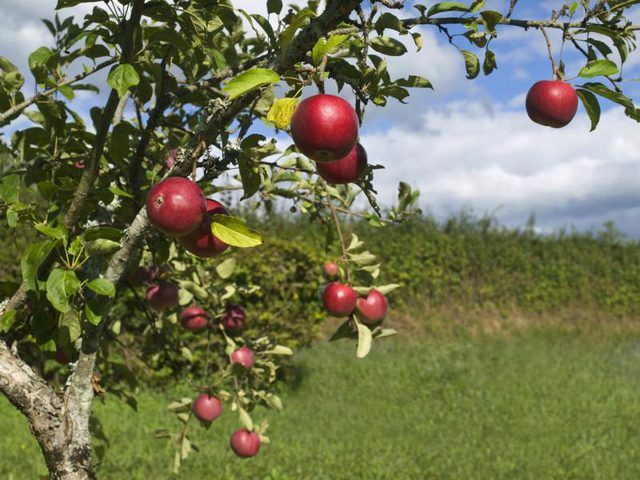Bulbs
Flower Basics
Flower Beds & Specialty Gardens
Flower Garden
Garden Furniture
Garden Gnomes
Garden Seeds
Garden Sheds
Garden Statues
Garden Tools & Supplies
Gardening Basics
Green & Organic
Groundcovers & Vines
Growing Annuals
Growing Basil
Growing Beans
Growing Berries
Growing Blueberries
Growing Cactus
Growing Corn
Growing Cotton
Growing Edibles
Growing Flowers
Growing Garlic
Growing Grapes
Growing Grass
Growing Herbs
Growing Jasmine
Growing Mint
Growing Mushrooms
Orchids
Growing Peanuts
Growing Perennials
Growing Plants
Growing Rosemary
Growing Roses
Growing Strawberries
Growing Sunflowers
Growing Thyme
Growing Tomatoes
Growing Tulips
Growing Vegetables
Herb Basics
Herb Garden
Indoor Growing
Landscaping Basics
Landscaping Patios
Landscaping Plants
Landscaping Shrubs
Landscaping Trees
Landscaping Walks & Pathways
Lawn Basics
Lawn Maintenance
Lawn Mowers
Lawn Ornaments
Lawn Planting
Lawn Tools
Outdoor Growing
Overall Landscape Planning
Pests, Weeds & Problems
Plant Basics
Rock Garden
Rose Garden
Shrubs
Soil
Specialty Gardens
Trees
Vegetable Garden
Yard Maintenance
How Fast Do Apple Trees Grow?
How Fast Do Apple Trees Grow?. Apple trees (*Malus spp.*) grow at different rates, depending on the variety and rootstock. Home gardeners naturally want to know how fast a variety of apple tree will grow and how long it takes for it to yield fruits. Additional issues that need to be considered are pollination and winter chill hours, both of which...
Apple trees (Malus spp.) grow at different rates, depending on the variety and rootstock. Home gardeners naturally want to know how fast a variety of apple tree will grow and how long it takes for it to yield fruits. Additional issues that need to be considered are pollination and winter chill hours, both of which are necessary for an apple tree to yield fruits.

Most apple varieties are not self-fruitful; they need pollen from another apple variety to yield fruits. Such an apple tree planted by itself won’t produce fruits. A few varieties are self-fruitful, providing their own pollen, but they typically yield more fruits when they receive pollen from another variety. Most garden supply centers selling apple saplings have charts showing the pollen needs of specific varieties.
Although apples generally are hardy in U.S. Department of Agriculture plant hardiness 3 through 8, with some differences among varieties, they have what are called winter chill requirements -- the number of winter hours below 45 degrees Fahrenheit they need to blossom and yield fruits. Most varieties require 500 to 1,000 chill hours. Only a few varieties have low-chill requirements -- fewer than 500 chill hours -- and yield fruits in areas with warm winters.
Arborists define a slow growth rate for a tree as 12 inches or fewer per year, a medium growth rate as 13 to 24 inches annually and a fast growth rate as 25 or more inches each year. Examples of apple tree varieties and their growth rates include:
"Stayman Winesap" (Malus x domestica "Stayman Winesap"), which grows fewer than 12 inches each year and is hardy in U.S. Department of Agriculture plant hardiness zones 5 through 8. Its growth rate depends on well-drained soil and six to eight hours of unfiltered sunlight each day.
"Red Jonathon" (Malus x domestica "Red Jonathan," USDA zones 4 through 8), which grows 13 to 24 inches per year when it has moist, well-drained soil and six to eight hours of unfiltered sunlight daily.
"Red delicious" (Malus x domestica "Red Delicious," USDA zones 5 through 8), which grows more than 24 inches annually if it is planted in moist, well-drained soil and gets six to eight hours of unfiltered sunlight each day.
"Anna" (Malus x domestica "Anna," USDA zones 5 through 9), which grows 13 to 25 or more inches per year. It needs moderate to high amounts of water, full-sun exposure and is a low-chill variety, requiring 200 to 300 chill hours.
Planting an apple tree variety suitable for your location's soil and climate will help the tree have its fastest growth rate. Proper fertilizing helps, too. Lacking a soil test's results and during the first year after planting an apple tree, scatter 1 pound of 10-10-10 fertilizer on the soil from 6 inches away from the tree's trunk to the soil beneath the outer tips of the tree's branches in late winter or early spring before the tree produces new growth upon emerging from dormancy. Water the fertilized soil to help the fertilizer get into the ground. Apply 2 pounds of the fertilizer the second year and 3 pounds the third year. Give a mature tree no more than 5 to 6 pounds of the fertilizer per year. Do not apply fertilizer closer than 6 inches to a tree's trunk.
The size of a tree, largely determined by its type of rootstock, also governs its growth rate. Standard-size apple trees, the fastest growers, typically grow at least 20 feet tall. Semi-dwarf trees become about 15 feet tall, and dwarf trees grow roughly 10 feet tall.
The differences in height do not affect the kind or quality of fruits apples bear. An apple tree's variety or cultivar depends on the variety or cultivar of the scion -- top portion -- that was grafted onto its rootstock, or lowest portion.
Besides apple tree growth rate, another important matter for the home gardener is how long it takes a tree from a plant nursery to yield fruits.
An apple tree grown from a seed typically takes six to 10 years to yield fruits.
Apple saplings sold at plant nurseries are typically cultivars grafted onto rootstocks. A rootstock determines tree size and how long it takes the scion cultivar growing on it to produce apples. Tags on nursery saplings typically identify rootstocks by numbers rather than names. Rootstocks widely used for apple varieties, the number of years it takes scions growing on them to yield fruits and mature tree size include:
Rootstock MM.111, four to six years, standard-size trees.
Rootstocks MM.106 and M.7a, three to four years, standard-size trees.
Rootstock M.26, two to four years, smaller than standard-size trees.
Rootstocks Mark and M.9, two to three years, smaller than standard-size trees.